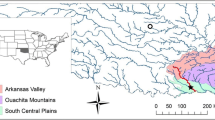Abstract
A high level of confidence in resource data is a key prerequisite for conducting a reliable economic feasibility study in deep water seafloor mining. However, the acquisition of accurate resource data is difficult when employing traditional point-sampling methods to assess the resource potential of polymetallic nodules, given the vast size of the survey area and high spatial variability in nodule distribution. In this study, we analyzed high-resolution acoustic backscatter intensity images to estimate nodule abundance and increase confidence levels in nodule abundance data. We operated a 120 kHz deep-towed sidescan sonar (DSL-120) system (1×1 m resolution) across a 75 km2 representative area in the Korean Exploration Area for polymetallic nodules in the Northeastern Equatorial Pacific. A deep-towed camera system was also run along two tracks in the same area to estimate the abundance of polymetallic nodules on the seafloor. Backscatter data were classified into four facies based on intensity. The facies with the weakest and strongest backscatter intensities occurred in areas of high slope gradient and basement outcrops, respectively. The backscatter intensities of the two other facies correlated well with the nodule abundances estimated from still-camera images. A linear fit between backscatter intensity and mean nodule abundance for 10 zones in the study area yielded an excellent correlation (r2 = 0.97). This allowed us to compile a map of polymetallic nodule abundance that shows greater resolution than a map derived from the extrapolation of point-sampling data. Our preliminary analyses indicate that it is possible to greatly increase the confidence level of nodule resource data if the relationship between backscatter intensity and nodule abundance is reliably established. This approach has another key advantage over point sampling and image analyses in that detailed maps of mining obstacles along the seafloor are produced when acquiring data on the abundance of polymetallic nodules. The key limitation of this work is a poor correlation between nodule coverage, as observed from photographs, and nodule abundance. Significant additional ground truth sampling using well located box cores should be completed to determine whether or not there is a real correlation between the backscatter and abundance.
Similar content being viewed by others
References
Blondel P (2009) Handbook of sidescan sonar. Springer-Praxis, Chichester, 316 p
Chough SK, Lee SH, Kim JW, Park SC, Yoo DG, Han HS, Yoon SH, Oh SB, Kim YB, Back GG (1997) Chirp (2-7 kHz) echo characters in the Ulleung Basin. Geosci J 1:143–153
CRIRSCO (2014) International reporting template. Committee for Mineral Reserves International Reporting Standards, 41 p
Damuth JE (1975) Echo character of the western equatorial Atlantic floor and its relationship to the dispersal and distribution of terrigenous sediments. Mar Geol 18:17–45
Damuth JE (1980) Use of high-frequency (3.5–12 kHz) echograms in the study of near-bottom sedimentation processes in the deep-sea: a review. Mar Geol 38:51–75
Hein JR, Conrad TA, Staudigel H (2010) Seamount mineral deposits: a source of rare metals for high-technology industries. Oceanography 23:184–189
Hein JR, Mizell K, Kochinsky A, Conrad TA (2013) Deep-ocean mineral deposits as a source of critical metals for high- and green-technology applications: comparison with land-based resources. Ore Geol Rev 51:1–14
ISA (2014) Workshop on polymetallic nodules resource classification. International Seabed Authority. https://www.isa.org.jm/workshop/workshop-polymetallic-nodule-resources-classification-october-2014 Accessed 11 Aug 2017
ISA (2015) Reporting standard of the International Seabed Authority for mineral exploration results assessment, mineral resources and mineral reserves. In: Recommendations for the guidance of contractors on the content, format and structure of annual reports, ISBA/21/LTC/15, Kingston, Jamaica, pp 22–43
Jauhari P, Kodagali VN, Sankar SJ (2001) Optimum sampling interval for evaluating ferromanganese nodule resources in the central Indian Ocean. Geo-Mar Lett 21:176–182
Kuhn T, Rathke M (2017) Report on visual data acquisition in the field and interpretation for SMnN. Blue Mining Deliverable D1.31. Blue Mining project, European Commission Seventh Framework Programme, 34 p
Kuhn T, Ruhlemann C, Knobloch A (2016) Classification of manganese nodule estimates: Can we reach the “measured resource” level? In: 45th Underwater Mining Conference (expanded abstract), Incheon, Korea, pp 1–6
Lee SH, Chough SK, Back GG, Kim YB (2002) Chirp (2–7 kHz) echo characters of the South Korea Plateau, East Sea: styles of mass movement and sediment gravity flow. Mar Geol 184:227–247
Pratson LF, Laine EP (1989) The relative importance of gravityinduced versus current-controlled sedimentation during the Quaternary along the mideast United-States outer continentalmargin revealed by 3.5 kHz echo character. Mar Geol 89:87–126
Rognstad MR, Naiman M (2002) Improved signal processing and data acquisition electronics for the DSL-120. In: IEEE Oceans 2002 Conference and Exhibition, Biloxi, USA, 29–31 Oct, pp 2264–2267
Ruhlemann C, Kuhn T, Wiedicke M, Kasten S, Mewes K, Picard A (2011) Current status of manganese nodule exploration in the German license area. In: Proceedings of the ninth (2011) ISOPE ocean mining symposium, Maui, Hawaii, 19–24 Jun, pp 168–173
Schoening T, Jones DOB, Greinert J (2017) Compact-morphology-based polymetallic nodule delineation. Sci Rep 7:13338
Shinn YJ, Chough SK, Kim JW, Woo JS (2007) Development of depositional systems in the southeastern Yellow Sea during the postglacial transgression. Mar Geol 239:59–82
Sterk R, Stein JK (2015) Seabed mineral deposits: a review of current mineral resources and future developments. In: Deep Sea Mining Summit, Aberdeen, Scotland, 9–10 Feb, 27 p
TOML (2016}) TOML Clarion Clipperton Zone Project, Pacific Ocean. Tonga Offshore Mining Limited (TOML), NI 43-101 Technical Report, 254
Yoo CM, Hyeong K, Kim HJ, Chi S-B, Kang J-K (2015) Image analyses for estimation of polymetallic nodule abundance in Korean Contract Area. In: 44th Underwater Mining Conference (expanded abstract), Florida, USA, 1–6 Nov, pp 1–2
Author information
Authors and Affiliations
Corresponding author
Rights and permissions
About this article
Cite this article
Yoo, C.M., Joo, J., Lee, S.H. et al. Resource Assessment of Polymetallic Nodules Using Acoustic Backscatter Intensity Data from the Korean Exploration Area, Northeastern Equatorial Pacific. Ocean Sci. J. 53, 381–394 (2018). https://doi.org/10.1007/s12601-018-0028-9
Received:
Revised:
Accepted:
Published:
Issue Date:
DOI: https://doi.org/10.1007/s12601-018-0028-9




